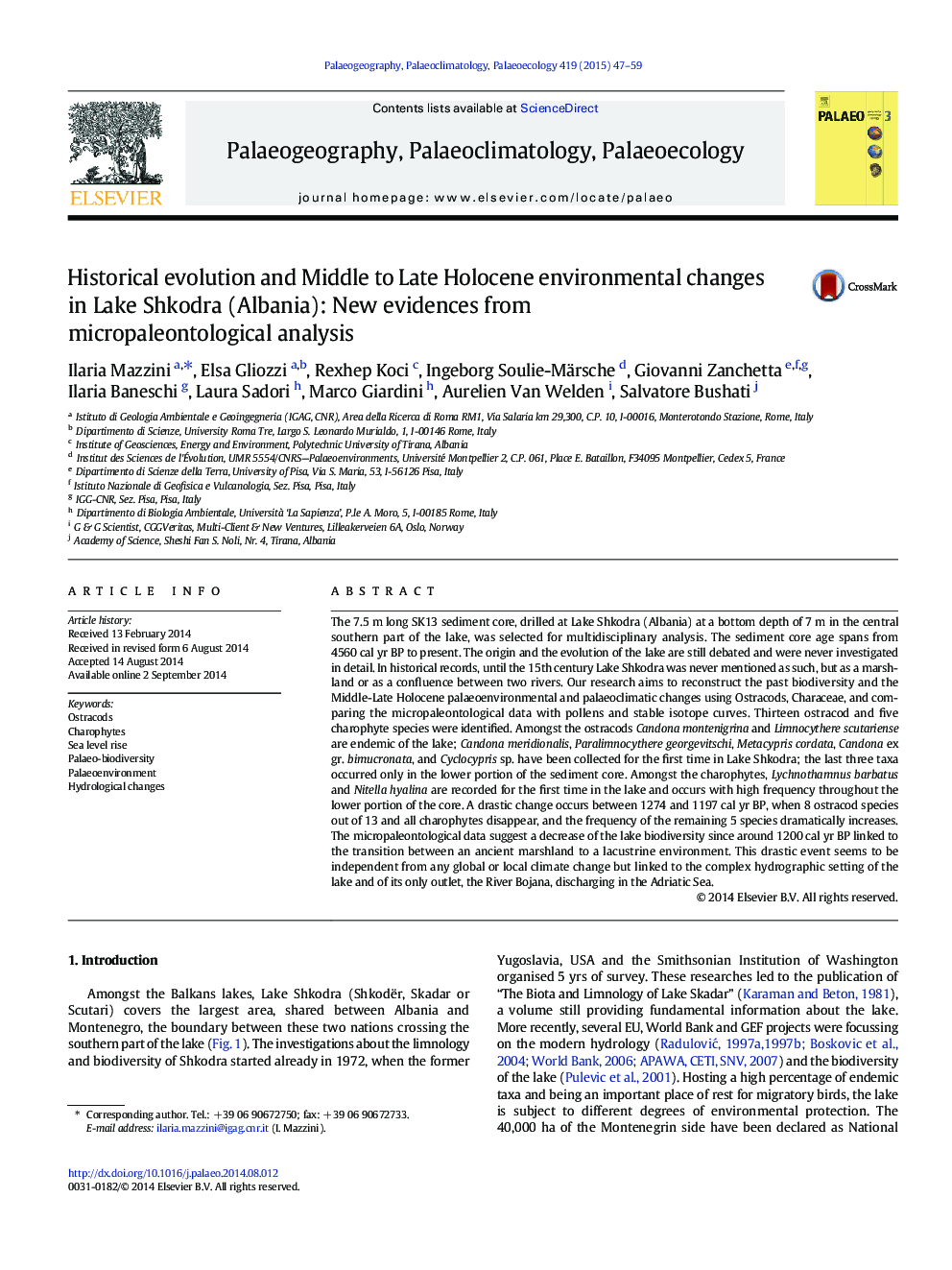| کد مقاله | کد نشریه | سال انتشار | مقاله انگلیسی | نسخه تمام متن |
|---|---|---|---|---|
| 4466077 | 1622171 | 2015 | 13 صفحه PDF | دانلود رایگان |
• We analyse a sediment core drilled in Lake Shkodra spanning the last 4500 years
• Previously unknown evolution of the lake is detected using ostracods and characeae
• Micropalaeontological analyses confirm it as a Balkan biodiversity hotspot
• Past biodiversity trends are linked to human impact
• Human impact and hydrological variations of the lake overprint climate changes
The 7.5 m long SK13 sediment core, drilled at Lake Shkodra (Albania) at a bottom depth of 7 m in the central southern part of the lake, was selected for multidisciplinary analysis. The sediment core age spans from 4560 cal yr BP to present. The origin and the evolution of the lake are still debated and were never investigated in detail. In historical records, until the 15th century Lake Shkodra was never mentioned as such, but as a marshland or as a confluence between two rivers. Our research aims to reconstruct the past biodiversity and the Middle-Late Holocene palaeoenvironmental and palaeoclimatic changes using Ostracods, Characeae, and comparing the micropaleontological data with pollens and stable isotope curves. Thirteen ostracod and five charophyte species were identified. Amongst the ostracods Candona montenigrina and Limnocythere scutariense are endemic of the lake; Candona meridionalis, Paralimnocythere georgevitschi, Metacypris cordata, Candona ex gr. bimucronata, and Cyclocypris sp. have been collected for the first time in Lake Shkodra; the last three taxa occurred only in the lower portion of the sediment core. Amongst the charophytes, Lychnothamnus barbatus and Nitella hyalina are recorded for the first time in the lake and occurs with high frequency throughout the lower portion of the core. A drastic change occurs between 1274 and 1197 cal yr BP, when 8 ostracod species out of 13 and all charophytes disappear, and the frequency of the remaining 5 species dramatically increases. The micropaleontological data suggest a decrease of the lake biodiversity since around 1200 cal yr BP linked to the transition between an ancient marshland to a lacustrine environment. This drastic event seems to be independent from any global or local climate change but linked to the complex hydrographic setting of the lake and of its only outlet, the River Bojana, discharging in the Adriatic Sea.
Journal: Palaeogeography, Palaeoclimatology, Palaeoecology - Volume 419, 1 February 2015, Pages 47–59
